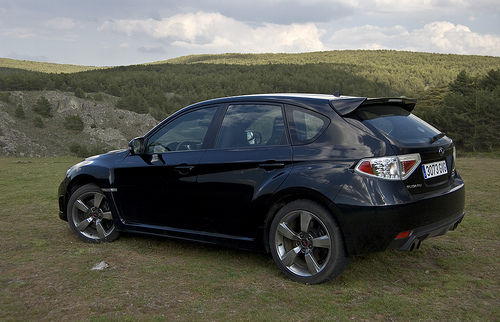Two years ago, Subaru announced that the new 2015 WRX would not be available as a wagon. You could have the former rally machine as a sedan or nothing.
Not surprisingly, this caused an uproar amongst car enthusiasts. No hatch!? What’s the point? How can I pretend I’m a WRC driver in the snowy parking lot of Market Basket?
Well, there’s the 2016 Ford Focus RS, but that’s not important right now. The point is this: People. Love. Wagons. And I don’t really get it. I don’t entirely understand what is so much better about a longer, slightly heavier version of a car that I already have.
If you plan on commuting to work, buy a Ford Focus, and if you like camping, buy a Grand Cherokee. Seems pretty simple, so my world worked quite happily for a long time. I just thought that people bought wagons for the same reason they bought Honda CRZ’s—they just didn’t know any better.
But after some discussion—arguments, really—with a few colleagues, I decided to give wagons another look.
Apparently while I’ve been drooling over outrageously fast coupes, the station wagon has made a comeback. Before I continue, it is worth clarifying my own definition of a wagon, because of the wide variety.
When I say wagon, I mean a sedan-height car, based on a sedan chassis, that has at least five doors, has three windows on each side, and has plenty of added luggage space inside. I do not mean a regular sedan with a liftback (I’m looking at you, Audi A7), nor do I mean a squat little SUV or CUV (Toyota Venza).
The modern interpretation of the station wagon is no longer a sedan with a large tumor on the back end, as it was in the ’70s. It seems auto manufacturers have taken 15 minutes to actually style them as well.
And, to my outright shock, I found there are 19 wagons available to the public brand-new, not including all of those which you can buy used. That means that there are at least 19 models of car which manufacturers think will be financially sound.
So after some searching around on blogs, discussion boards, and two autoshows, a convincing list began to take shape.
• Price: Wagons are cheap. Brand new, they cost about the same as the sedans on which they’re based. And used, they cost significantly less. People don’t see them as desirable, so we enthusiasts can pick them up at phenomenal deals.
• Performance: Wagons can be fast. Seriously, they can. Ever hear of the Cadillac CTS-V Wagon or the BMW 550 GT? Over 450 horsepower, and you can fit at least seven dogs into them. Even on the lower end of the scale, one can find a Subaru Forester that (with a chip and exhaust) will put 300 horsepower to all four wheels.
• Versatility: Wagons are useful. Want to go camping with some friends? Load all your gear into the wagon of your choice and you can enjoy the drive there and back. Some things that will also fit into most wagons with the rear seats in place: a drum kit, skis and snowboards, all of your clothes, a medium sized wedding cake.
• Fun: This is the X factor. There is something fundamentally cool about a go-anywhere, do-anything car that can smoke its tires and give any 5.0 Mustang a run for its money. And with a lower center of gravity that any CUV out there, you can get those dogs home in a hurry without ending up in a ditch.
All right, I’ll admit that my stubborn mind has been swayed.
Wagons are cool, and not just for people on their way to a Boy Scout meeting. Still not convinced?
You might just want to google the Datsun 240Z Sport Wagon. While it’s still only a 3-door, this one-off car has made it’s way into my all-time favorites list. And the next time you rev up next to a Mercedes E-Class station wagon, make sure it doesn’t say ‘E63 AMG’ on the back, or you’re going to embarrass yourself.





















































